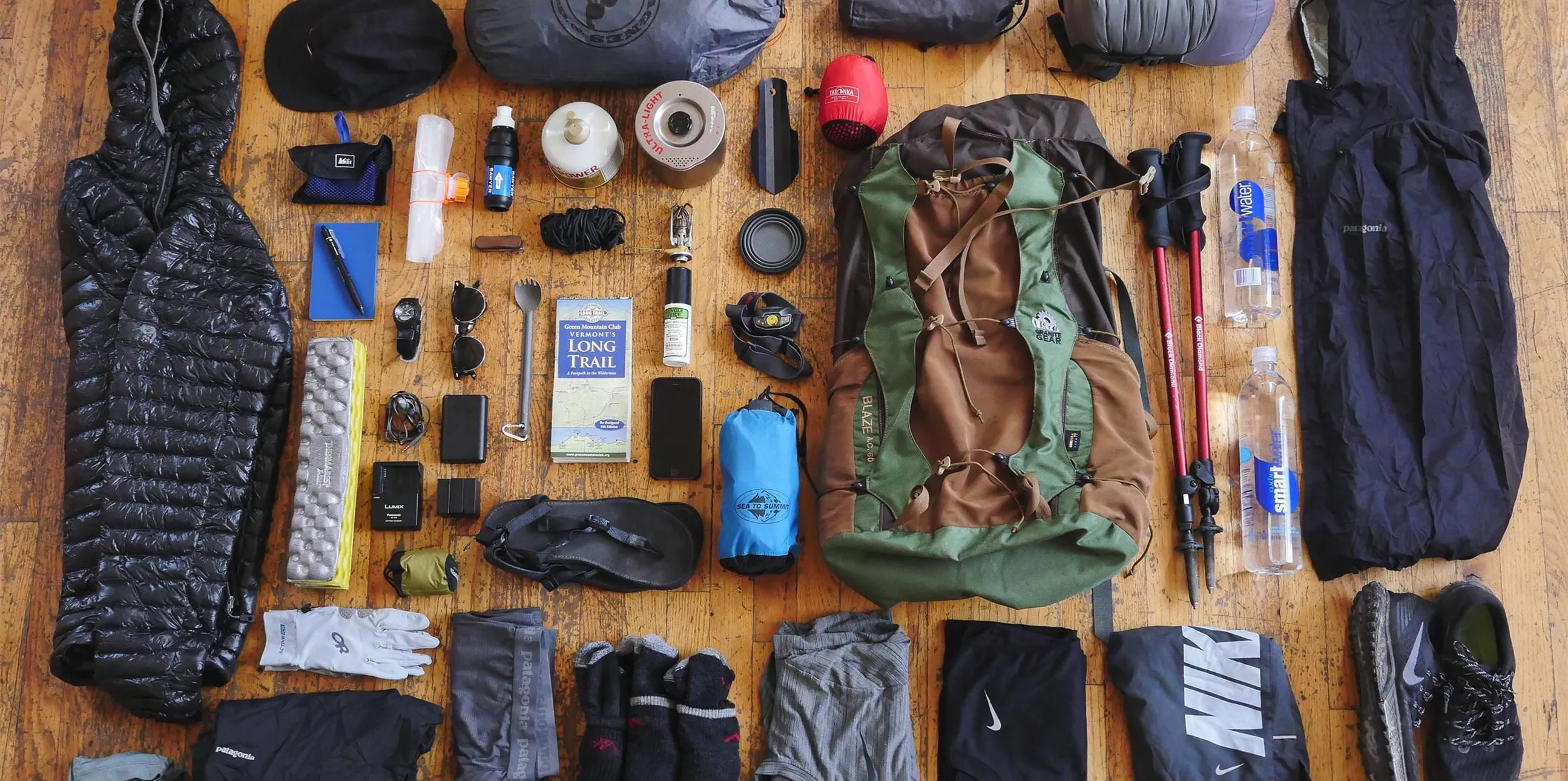

Packing the appropriate gear is very important for a successful and comfortable trip when you get ready for your Kilimanjaro Climbing Tour. The weather on Mount Kilimanjaro is very different, from humid jungles at the base to chilly, windy peaks.
You should be ready for these changes in temperature and weather as you go up. To help you prepare well and make sure you have everything you need for a safe and enjoyable climb, here is a complete Kilimanjaro Gear List.
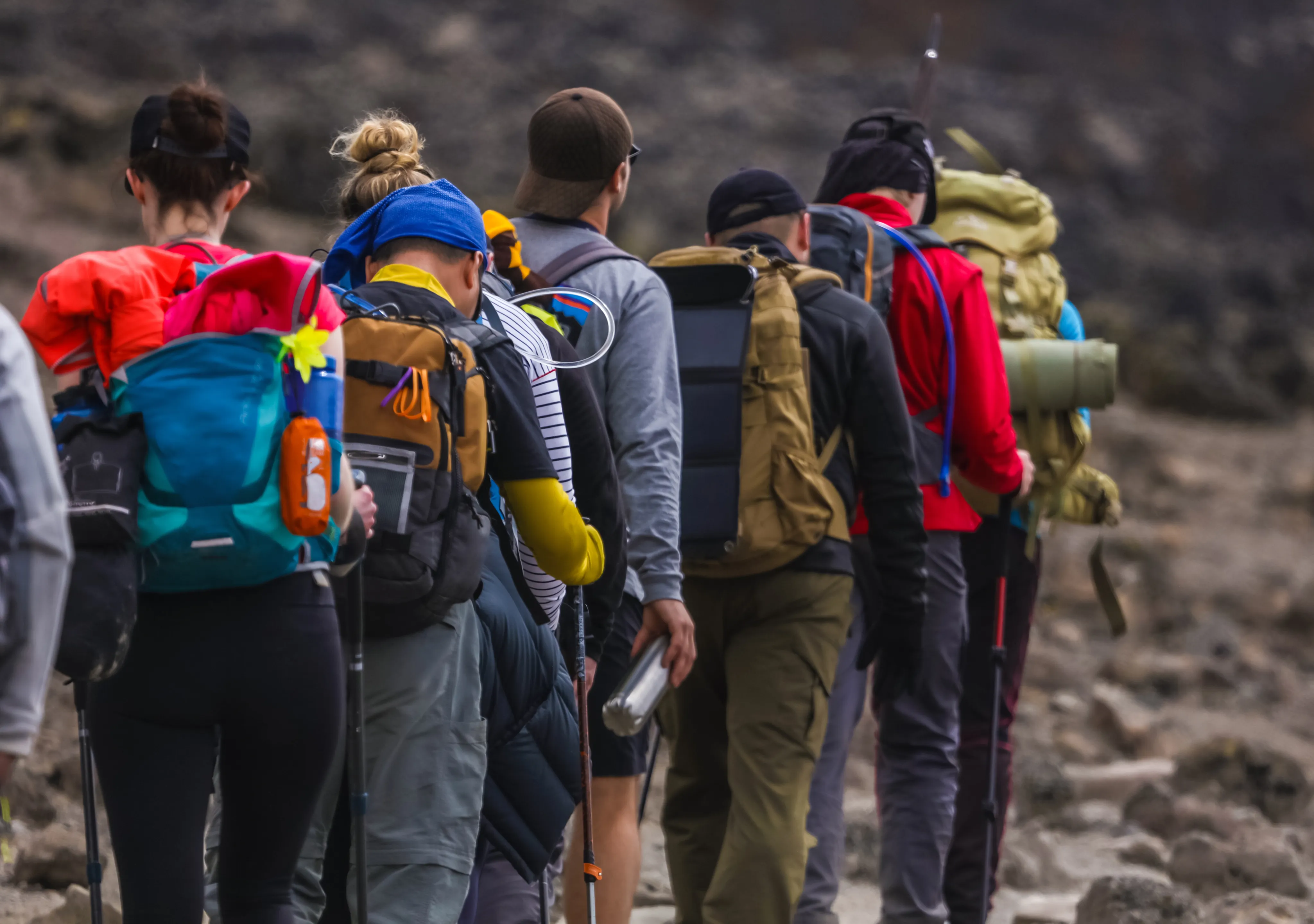
A small, comfortable daypack will carry your daily essentials, including water, snacks, and a camera. It needs to be light but sturdy, offering enough space for what you need during the trek without being bulky.
This bag will be carried by Kilimanjaro Porters to hold all your main gear. It’s essential to ensure the bag is large enough to accommodate your clothes, sleeping bag, and other items, while being durable and waterproof to protect your belongings from rain.
A pair of Trekking Poles is a crucial piece of gear. These help with stability, reduce pressure on your knees, and provide extra balance, especially on the steep slopes of Kilimanjaro.
The temperatures at high altitudes can be frigid, especially at night. A Sleeping Bag rated for 0°F (about -18°C) is essential to keep you warm, especially when camping at higher elevations.
You’ll need two 1L water bottles to stay hydrated during your trek. Since hydration is key to maintaining energy and overall health, it’s essential to carry enough water, especially in the dry, dusty conditions at high altitudes.
A hydration reservoir can make drinking water on the go more convenient, especially during long stretches of trekking. Opting for it is a personal choice, but it’s a good option if you prefer hands-free hydration.
When you reach the summit or the higher camps, the cold, dark, and cramped conditions may make it difficult to find a bathroom. A Pee Bottle will allow you to relieve yourself without leaving your tent or camp.
A Pee Funnel helps women comfortably relieve themselves in a standing position, which is especially useful in cold and difficult conditions.
These three Trash Bags will be used to carry all your waste off the mountain. Kilimanjaro is a protected area, and all climbers are expected to leave no trace, so packing out all waste is essential.
A sun hat with a wide brim will protect your face, ears, and neck from the intense UV rays, especially at lower altitudes and during sunny stretches.
For the colder nights at higher altitudes, you’ll need a Warm Beanie made from fleece or wool to keep your head insulated and comfortable.
A headlamp is essential for summit night and any night hikes. It helps you see in the dark and ensures you’re prepared for early morning treks before sunrise.
The sun can be intense on Kilimanjaro, especially at higher elevations. A Pair of High-Quality Sunglasses with UV protection will shield your eyes from harmful rays and prevent snow blindness.
For summit night, you’ll need Warm Gloves or Mittens to protect your hands from extreme cold. Ensure they are insulated and windproof to keep your hands comfortable during the colder stretches of the climb.
A pair of Lightweight Gloves is useful for lower-altitude trekking, offering protection and comfort without overheating.
A pair of sturdy, waterproof trekking boots will give you the ankle support you need on rough terrain and the comfort to trek for hours. Be sure they have good tread and ankle support.
On summit night, you’ll need Thermal Socks to keep your feet warm in freezing temperatures. Choose thick wool socks for extra insulation.
You should pack 4-6 Pairs of Trekking Socks to keep your feet dry and comfortable throughout the trek. Merino wool or synthetic socks work best to wick away moisture and prevent blisters.
Gaiters are worn over your boots and lower legs to keep snow, dirt, and rocks out of your boots. They’re especially helpful in wet or muddy conditions and will protect your legs when walking through thick vegetation or snow.
Pack 2-3 Pairs of Thermal Baselayers made of moisture-wicking synthetic materials or merino wool. These baselayers will keep you warm and dry, especially in the colder nights or higher altitudes.
You’ll need 3-4 Short-Sleeve Shirts, preferably moisture-wicking, to stay cool during lower-altitude sections of the climb.
2 Long-Sleeve Shirts will provide additional sun protection and warmth as you ascend the mountain.
A Fleece or Softshell Jacket is perfect for extra insulation during the day and night. It will retain body heat without being too bulky.
An Insulated Jacket is essential for warmth, especially during the colder days and summit night. This jacket should trap body heat and provide a layer of protection against the cold.
The Hard Shell Jacket protects you from rain, wind, and snow. It should be breathable yet waterproof, offering protection from Kilimanjaro’s unpredictable weather.
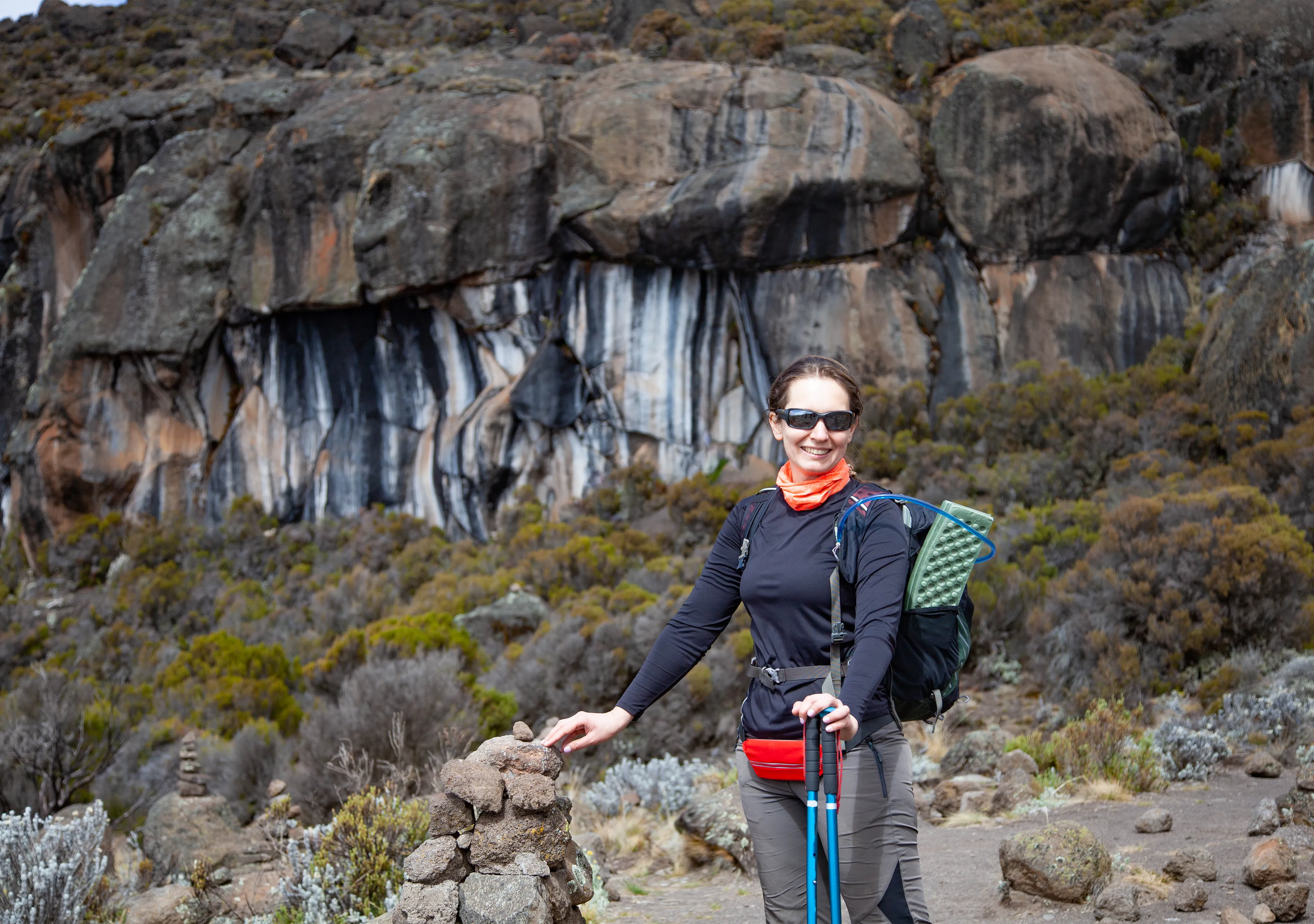
You’ll need 2 Pairs of Trekking Trousers, made from lightweight, quick-drying material for comfort during lower-altitude treks.
One pair of Softshell Pants will provide extra warmth and flexibility for cold mornings or higher-altitude sections of the climb.
A pair of Hardshell Pants will protect you from rain and wind, particularly at higher altitudes and during summit night.
Thermal Leggings will provide an additional layer of warmth for summit night when temperatures can drop well below freezing.
For those wanting to climb via longer Kilimanjaro Climbing Routes like the Lemosho, we suggest packing 4-6 pairs of socks, 5-7 pairs of underwear, 3 short-sleeved baselayer tops, and 3 long-sleeved baselayer tops. These additional clothing items will provide you with an extra change of clothes during the journey.
A Sleeping Pad will help insulate you from the cold ground and provide extra comfort during your night’s rest.
Insect repellent is essential to keep bugs away, especially at lower altitudes where mosquitoes and other insects are more common.
You’ll want to capture the incredible views of Kilimanjaro. A Camera (or smartphone) will help you document the beautiful landscapes throughout the climb.
Water Purification Tablets or a SteriPen will ensure that any water you source during the climb is safe to drink.
Pack a small Toiletry Bag with your essential hygiene items, including toothbrush, toothpaste, and wet wipes.
High-altitude UV rays can be harsh, so bring Sunscreen with SPF 30 or higher to protect your skin from sunburn.
Protect your lips from chapping by bringing Lip Balm with SPF, especially for summit night when the air is dry and cold.
Hand sanitiser will help you stay clean when there’s no access to soap and water.
Earplugs are great for ensuring a good night’s sleep by blocking out noise in the camps.
A small first-aid kit should include bandages, antiseptic wipes, blister treatments, and any personal medications you may need.
Be sure to bring any Medications and Prescriptions you take regularly, as well as medication for altitude sickness if recommended by your doctor.
Personal snacks like energy bars or dried fruit will keep your energy up during the trek, especially when there are long stretches without meals.
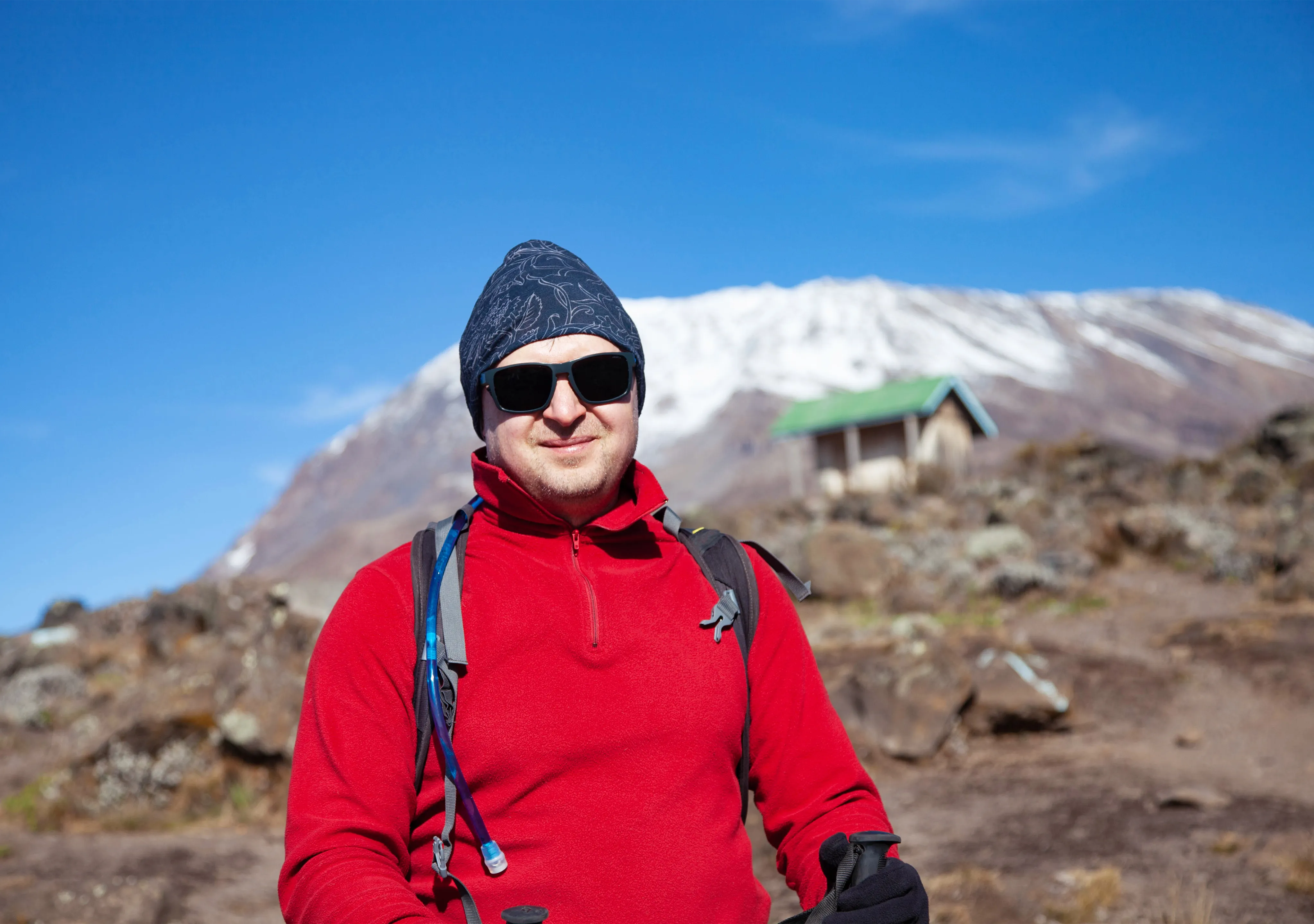
Wet wipes are perfect for cleaning up after long trekking days when you can’t access a shower.
A power bank will keep your electronics charged, particularly since there are no power outlets on the mountain.
A travel pillow can make your rest more comfortable, especially in the colder, higher camps.
Use earplugs to block out noise from other climbers or the wind if you're a light sleeper.
We suggest that you start your Kilimanjaro Climbing Preparations early on. Look over your Kilimanjaro Gear List and cross out the things you already have. If you still need some things, check out REI, Amazon, or Moosejaw to find excellent offers on gear from previous years.
Practice packing your duffel and daypack ahead of time. It will be easier if you know where everything goes, especially on those frigid mornings when you don't have much time.
Also, go for a walk with your boots, trekking poles and daypack. Try on different layers of clothing to get used to how they fit and feel.
While you're climbing, don't forget to leave any excess bags at the accommodation before your climb.
And if you have any questions, please don't hesitate to ask. Our crew at Bestday Safaris is available to help you every step of the way. We're happy to help you get ready for this amazing tour of a lifetime!
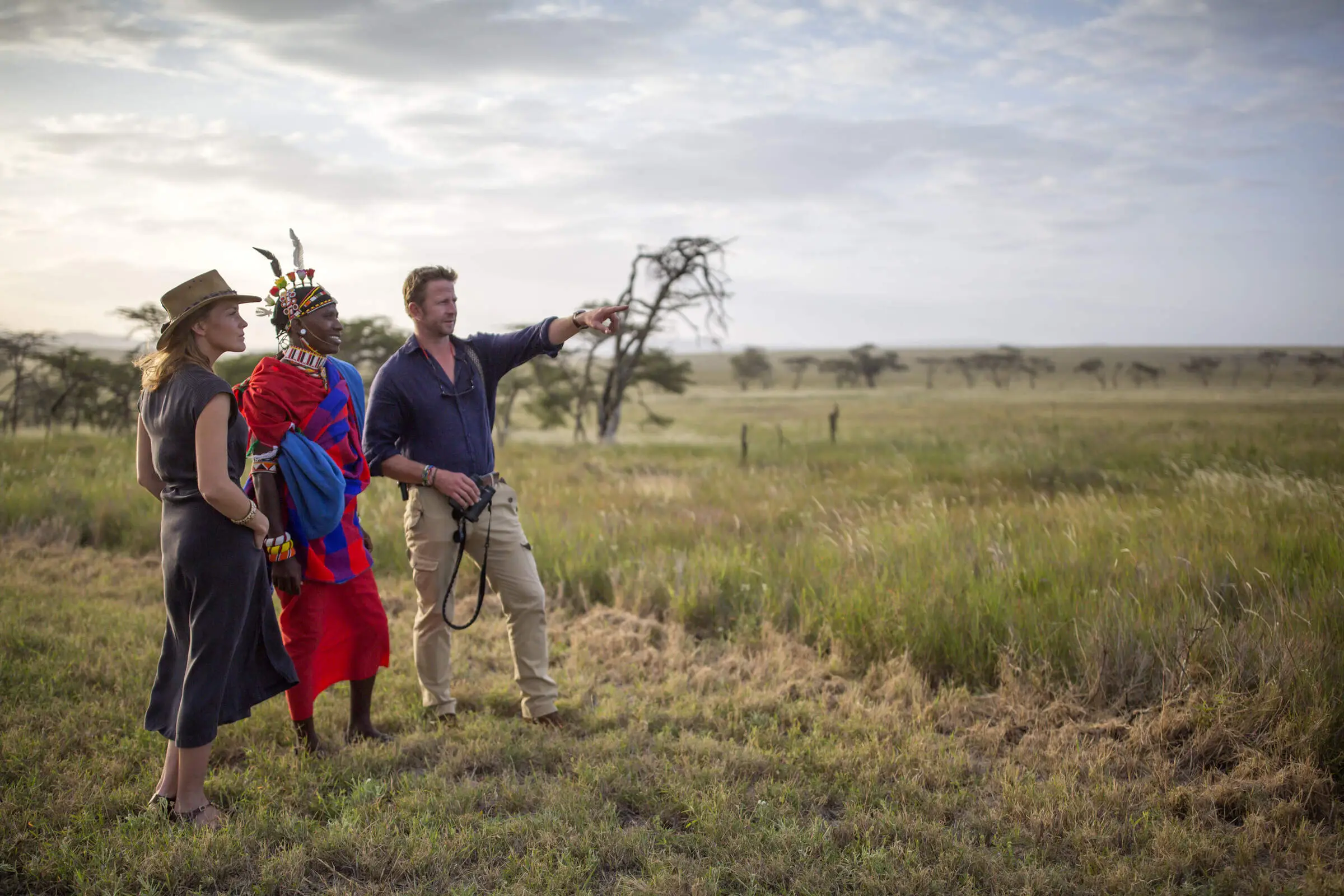
It is a long established fact that a reader will be distracted by the readable content of a page when
We use equipment of international standards & our guides are trained in First aid & personal protection equipment
We use equipment of international standards & our guides are trained in First aid & personal protection equipment
We use equipment of international standards & our guides are trained in First aid & personal protection equipment
It's exciting to climb Kilimanjaro, but it's even more fun when you're ready. There are plans, training tips, packing lists, safety tips, and more here for you to find all the trip guides you need. Before your trip, click on each of the guides below to learn more.
Whether you are ready for Tanzania Safari Dream or Kilimanjaro Adventure or Beach Relaxation for a few days or a few weeks long, our experts will create an itinerary from scratch, fully tailored to your wishes. Want to visit a beautiful destination or start an adventure to reach the top, or relax in a paradise, we will make it happen.